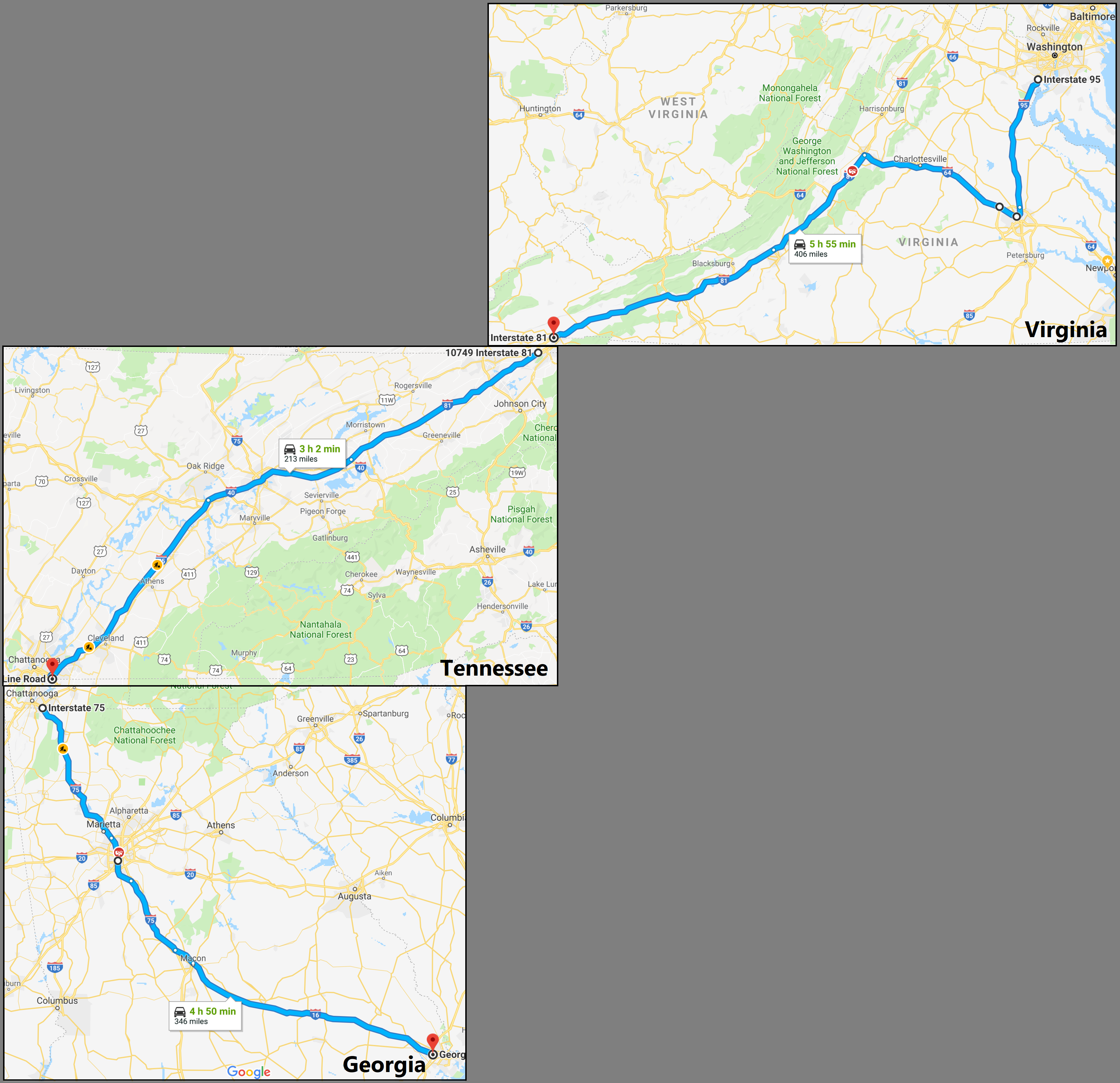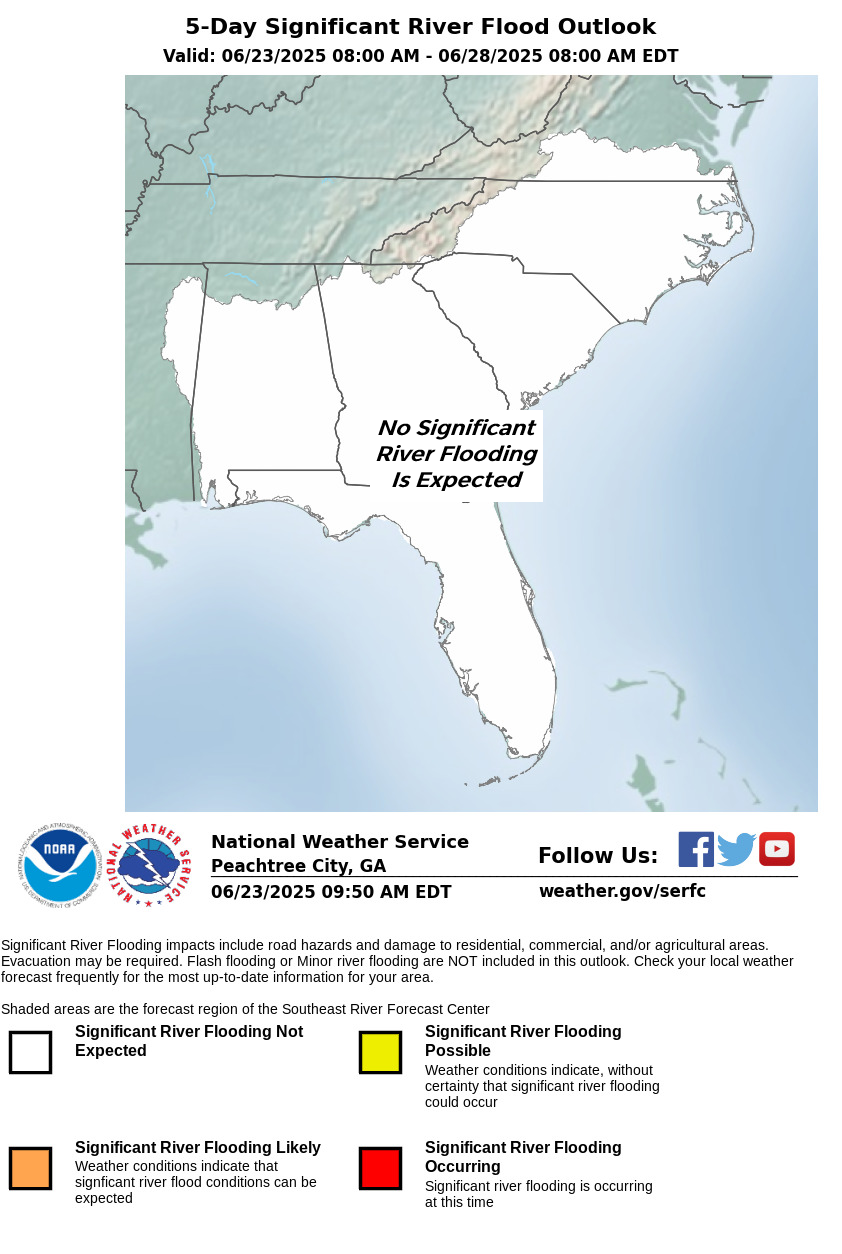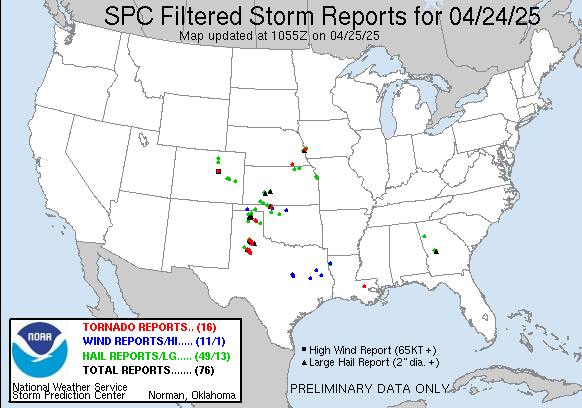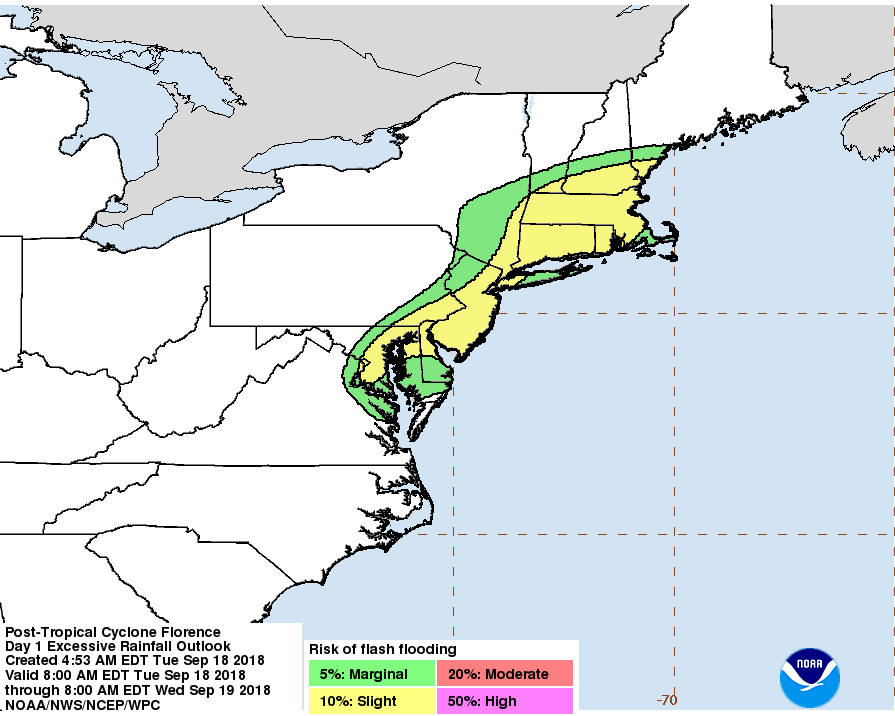Archive for September, 2018
Flood outlook after Florence
Wednesday, September 19th, 2018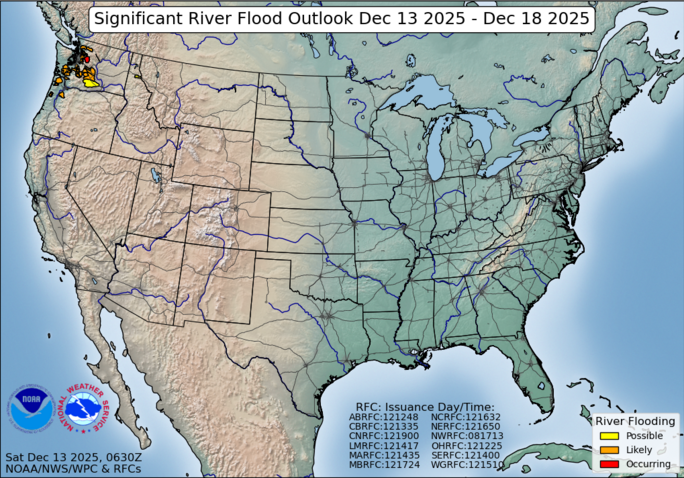
Legend description:
- Occurring or Imminent – Significant flooding is already occurring or is forecast to occur during the outlook period.
- Likely – Weather conditions indicate that significant flooding can be expected during the outlook period.
- Possible – Weather conditions indicate that significant flooding could occur. Such flooding is neither certain nor imminent.
CDC: After Hurricane Florence—Clinical Guidance for Carbon Monoxide Poisoning
Tuesday, September 18th, 2018CDC Health Alert Network (HAN) Health Advisory: Hurricane Florence—Clinical Guidance for Carbon Monoxide (CO) Poisoning
Centers for Disease Control and Prevention (CDC) sent this bulletin at 09/16/2018 02:56 PM EDT
| CDC issued the following Health Alert Network (HAN) Health Advisory on September 16, 2018. You are receiving this information because you subscribe to COCA email updates. If a colleague forwarded this email to you, yet you would like to receive future updates directly from COCA, click here.
If you have any questions about this or other clinical issues, please e-mail coca@cdc.gov On behalf of the Clinician Outreach and Communication Activity (COCA) |
|||||
|
Two sisters have allegedly died in Somalia from complications that arose after undergoing female genital mutilation
Tuesday, September 18th, 2018
“……the sisters were cut the same day by a local circumciser.
They continued bleeding 24 hours after the procedure, and died while their mother was taking them to a health center…
Zimbabwe: An outbreak of cholera has so far killed 25 people, mostly in the capital, Harare.
Tuesday, September 18th, 2018“……The current outbreak began on 6 September after water wells were contaminated with sewage in Harare.
Tests found the presence of cholera and typhoid-causing bacteria which has so far infected over 3,000 people, Health Minister Obadiah Moyo told reporters on Thursday.
According to the World Health Organization (WHO), patients were not responding to first-line antibiotics……The cholera outbreak can be traced to Harare city council’s struggle to supply water to some suburbs for more than a decade, forcing residents to rely on water from open wells and community boreholes……”
9/16/1978: A 7.7M earthquake lambasts Iran, killing more than 25,000.
Sunday, September 16th, 20189/16/2013: a 34-year-old man goes on a rampage at the Navy Yard in Washington, D.C., killing 12 people and wounding several others over the course of 1 hour before he is killed.
Sunday, September 16th, 2018The N.C. Department of Transportation continues to urge drivers to stay off the roads
Sunday, September 16th, 2018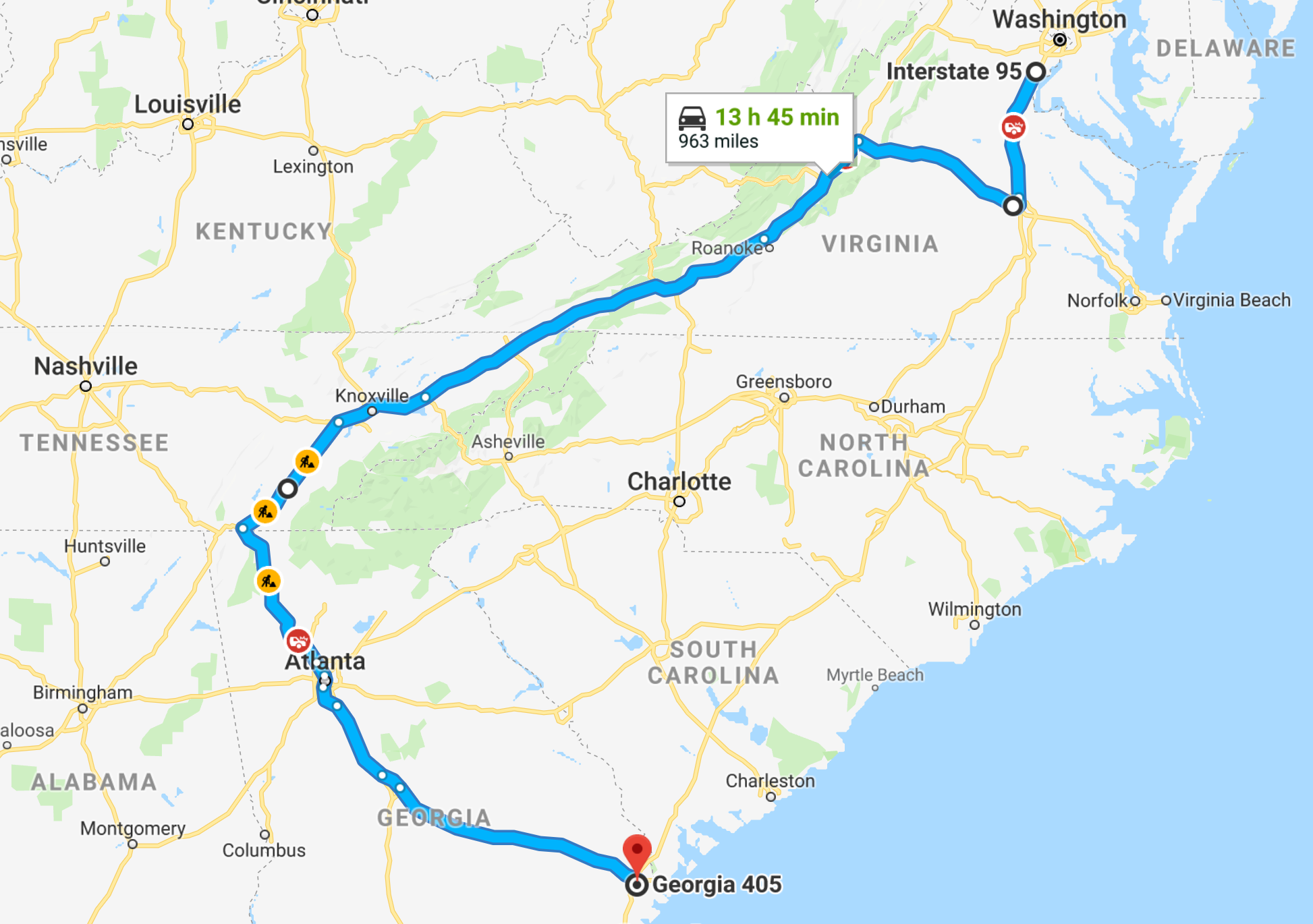 As of Sunday morning, there were more than 600 road closures across the state.
As of Sunday morning, there were more than 600 road closures across the state.
Travel is hazardous in North Carolina on all roads south of US 64 and east of I-73/74. Motorists should not drive in these areas.
GPS systems are routing users into areas NCDOT is not recommending for travel.
To avoid North Carolina if traveling south on I-95 drivers should use I-64 West in Virginia to I-81 south, to I-75 south in Tennessee to I-16 East in Georgia back to I-95.
This is an extremely long detour, but it is the detour that offers the lowest risk of flooding at this time.
Through traffic from I-95 in Georgia is advised to use I-16 West to I-75 North to I-81 North to I-64 East back to I-95 in Virginia.
If you are already in North Carolina on I-95 you may use US 64 west to I-540 west to I-40 west to I-85 south into South Carolina.
Follow South Carolina DOT instructions to return to I-95.
Conditions are constantly changing please check back before you travel.
Motorists are advised not to travel on I-40 between I-95 and Wilmington due to the uncertainty of flooding conditions.
As the situation is rapidly changing NCDOT is doing our best to report these closures.
For the most current list of road conditions choose a Region, Route or County from the drop down menus below.
NC roads affected by the storm: List of Affected Roads / For areas without specific location details there is general information about roadway conditions: Road Conditions by County
For weather updates visit the National Weather Service / For the latest on hurricane readiness and response visit ReadyNC.org
For other storm related travel info visit https://www.ncdot.gov/travel-maps/traffic-travel/severe-weather/Pages/summer.aspx.
NCDOT’s latest press release
Note: On the map below, if there are no bright colored red/orange/yellow/green lines on the map there is not enough data to provide speed information on that segment of road.
Red and white striped lines mean that the road is closed.
